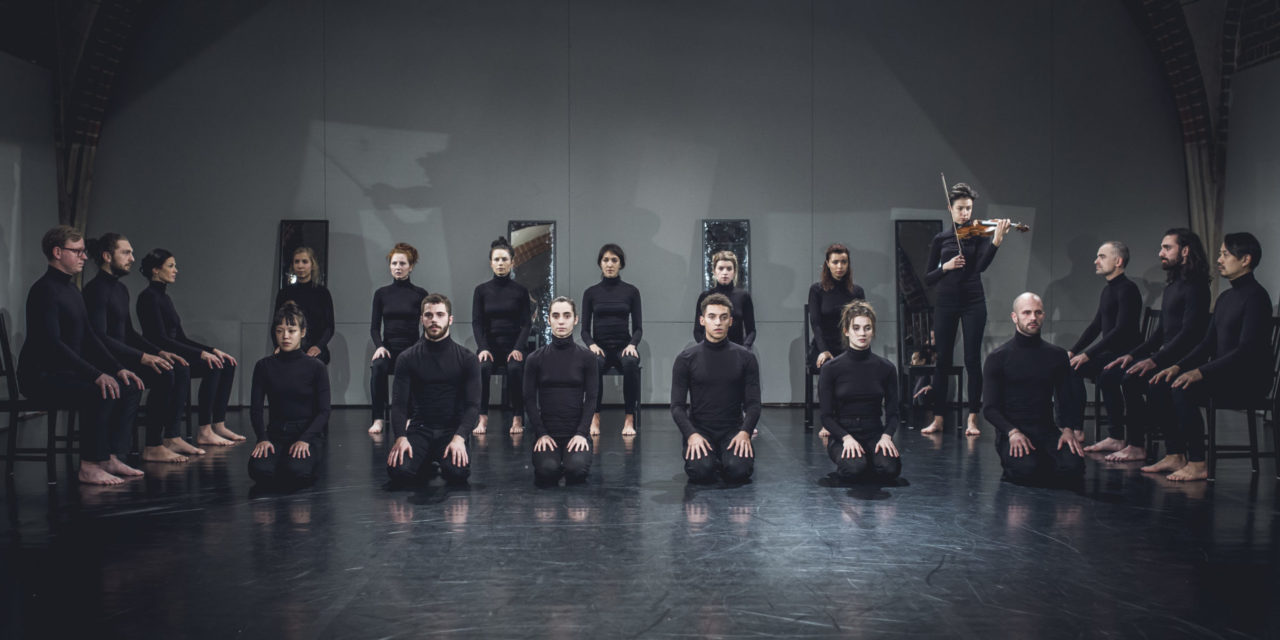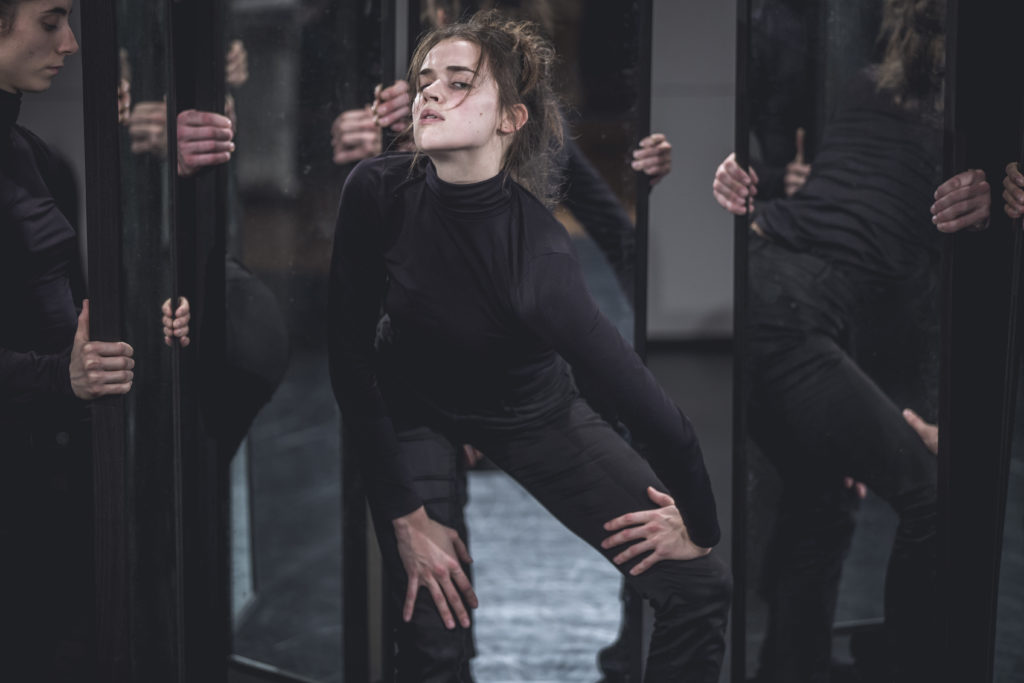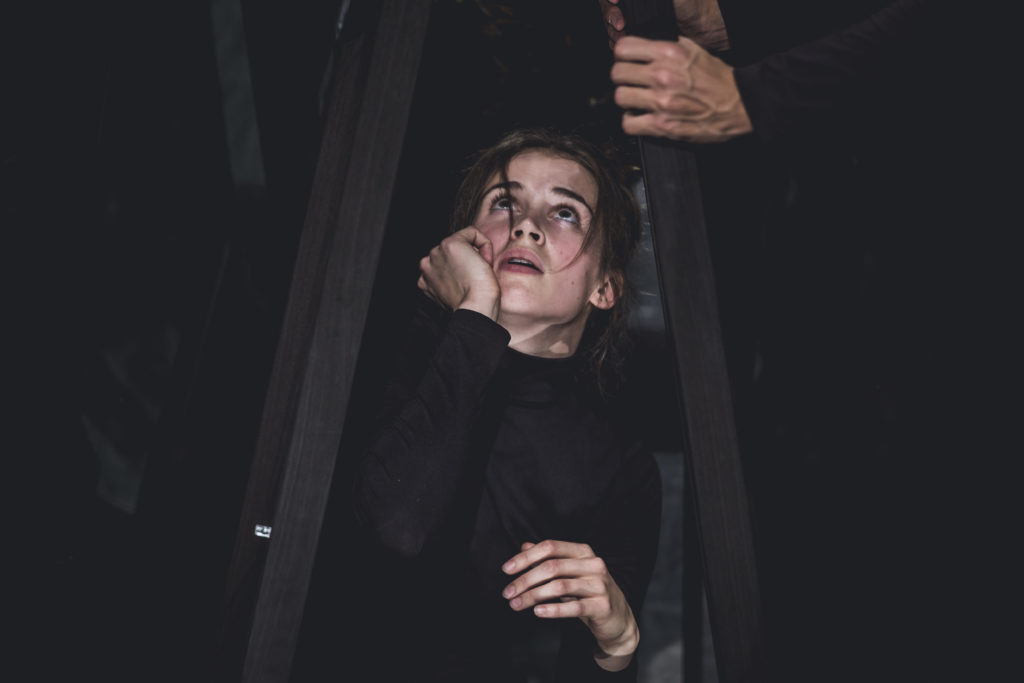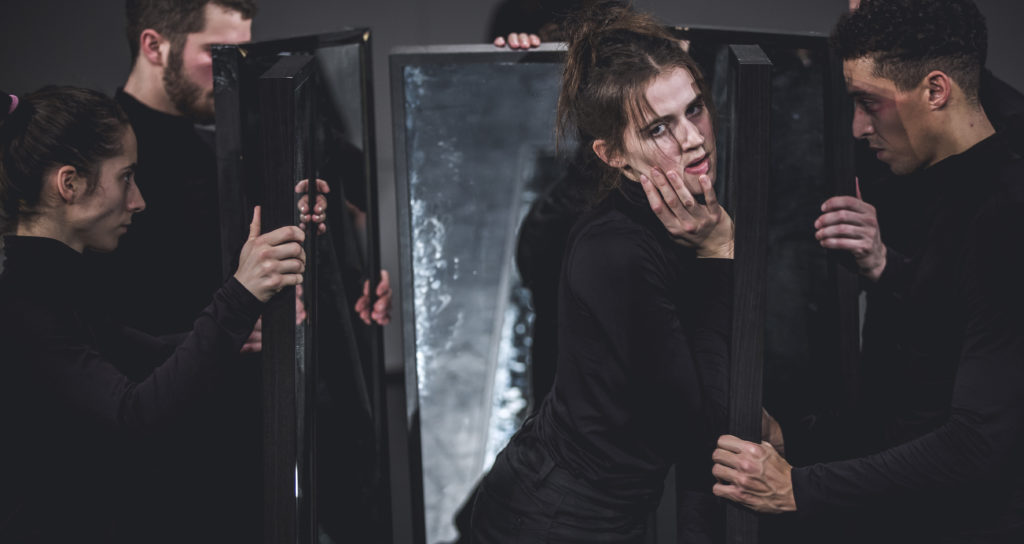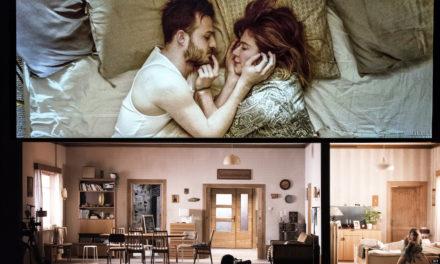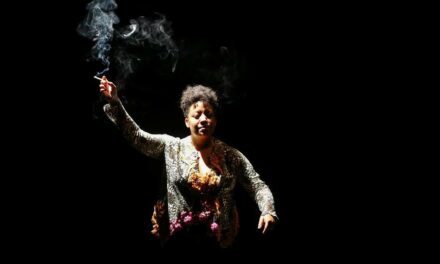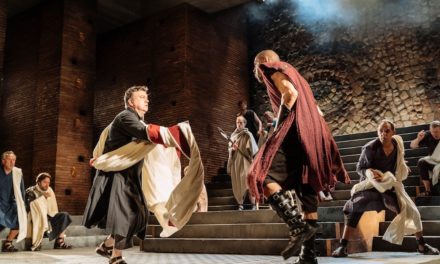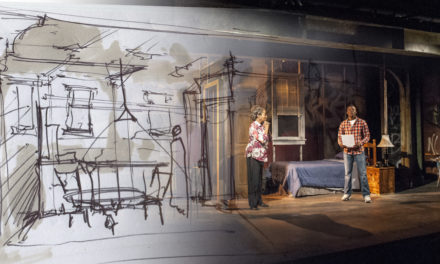In 2016 Song of the Goat Theatre celebrated the twentieth anniversary of its existence. Founded by Grzegorz Bral and Anna Zubrzycki in 1996, it is now led by the former, in Wrocław, Poland. The cosmopolitan nature of the physically and vocally based company was well reflected in last year’s global tour, which included the USA, Georgia, Chile, China and Spain. On 2 December 2016 the company presented their new spectacle, Wyspa (Island). Loosely inspired by Shakespeare’s The Tempest, the production is the result of a close collaboration of Song of the Goat Theatre with six dancers from the company INNE. Iván Pérez, the founder of INNE and the choreographer of Island, describes his collaboration with Grzegorz Bral in a conversation with Tomasz Wiśniewski.
Tomasz Wiśniewski: Can you compare rehearsals done with Song of the Goat Theatre and your usual way of working with dancers?
Iván Pérez: It was a very specific process because actor-singers needed a long time to create and learn the songs. It took a few weeks before I had finished songs to work on with dancers. In the meantime, there were two separate teams. While six dancers were working on recordings provided by singers, thirteen singers were creating new songs. There were of course meetings when we tried to put ideas together. We would test a little sketch of the choreography with one of the existing songs to decide whether they work together or not.
TW: So the sequence is first songs, then movement.
IP: Yes, indeed. We need to remember that the music was written first, and the lyrics came later, which means the performers would start learning the melodies of the songs and then bring the lyrics. So it took us some time to make sure the level of construction was as detailed as the songs were. In the meantime, we would develop some material that was attached not to any specific song but to the themes inspired by the topics of the performance. This, eventually, would speed up new compositions by exploring the existing material that didn’t belong to any specific song. In other words, some of the choreographies were shaped by specific songs, and other material developed independently, and had its individual language and message. We needed to find songs for such material. As you can see, it was a very flexible process. We didn’t use a single or coherent method, but we mixed different methodologies to construct and manoeuvre within this different kind of material, with movement and singing.
TW: Constructing a performance seems to mean a lot to you. How did you put all these episodes into a sequence?
IP: This happened in the later stage of the production. By the time we started constructing the performance, we felt that we were running out of time. We treated transitions not only as links between songs, or chapters, or episodes, but also as self-contained pieces of choreography. Some of these transitions are like songs, as they involve sound, singing along with moving objects in space.
TW: You do not use many props, and yet they create memorable images. It is visually awesome when mirrors entrap Orla Mc Carthy, the leader, in a kind of cage, or cave. How did you arrive at this concept?
IP: On the first day of rehearsals we started with one mirror. In trying to explore its potential, we developed a scene in which dancers move in the mirror and confront Orla. In this way we found a few interesting images. The next day, we worked with three mirrors and they turned out to be useful. Step by step we got used to them, and then put them aside. After some time I needed Orla to deliver a solo and brought the other five dancers with five mirrors. They formed a semi-circle around her, which later developed into the sequence that stayed in the performance. The image appeared in an almost accidental way when we interacted with the element in the rehearsal room, and we just followed what was happening. The moment the image appeared we realised its power, and we knew it was going to develop into one of our main symbols.
TW: Your programme includes rehearsal photos with images which do not appear in the performance.
IP: The image with bandages that you can see in the programme illustrates props that contribute to the creative process as triggers of material or ideas or content, but that eventually do not need to stay. Yet, the effect the bandages provided is embedded in the performance. If we kept this trigger, though, we would underestimate what was in this way achieved. The spectator would concentrate on this overpowering tool. It was a last-minute decision. I came to Gregor one day and said: “I strongly feel we don’t need this picture now.”
TW: Back to the mirrors then. It is interesting that you may see the reflection of an audience in them.
IP: Interestingly, it is not the object itself that creates meaning. It’s whatever the mirror reflects, what the mirror produces, that becomes the work, the magic, a metaphor, a shadow. These are very simple tools that provide universal possibilities. But within the context of the performance, the mirrors find transformative power. They are able to change their usual meaning because of the way they are used. You saw a cage, or a cave. They form also a river. They become fire. They produce shadows and nightmarish situations. Unlike the bandages, the mirrors easily change their meaning.
TW: Let’s talk about your cooperation with Grzegorz Bral. How did you arrive at the decision to eliminate the bandages? Did you keep on discussing decision-making, or did you perhaps agree that movement is your responsibility and the vocal communication is his on the assumption that you do not cross each other’s field?
IP: In the whole process of negotiation, there was a sense of territoriality because of our expertise. But Gregor has always commented on how the dancers respond to the space, or how they explore their personal energy. Yes, he had a lot to say to them. His aim was to inspire the dancers. In a similar way, I had a lot to give to the performers. Approaching performers from the other side was an element of entering and coming out of our own expertise.
But the performance is another subject. It is a kind of double universe. Even though he is the director and I am the choreographer, we need to remember that it is a significant part of the choreographer’s profession to be a director. I do contribute to the creation of what Gregor directs. Ideas like aesthetics, rhythm, and structure were as much his as they were mine.
But of course the collaboration needed to be done carefully. The bandages appeared. Then they were dropped. Gregor wanted them back. I had to oppose this by saying how strongly I feel they were unnecessary. At this point he agreed with me. We are intuitive enough to feel each other. There was a sense of power, of power shift, and the power dynamics. In this power dynamics we were forced to articulate our own decisions. So we had to sharpen our creative or artistic purpose behind our decisions. If I wanted to take something out, or bring something in, I really needed to know why. I had to explain it to Gregor, but it also worked the other way round. It made us very critical of our own choices – we were aware there was somebody else that we needed to find consensus with.
It must have been interesting also for Gregor because it’s the first time he has collaborated in such a way with another artist. I have had previous collaborations at this level before. Previous cooperation gave me a lot of experience, and this time I had more tools to be able to guide us whenever we got stuck. But Gregor has always been very responsive. We could always go back to the core and discuss what we were looking for in the performance. After all, our main objective is to leave something that resonates in space and that the audience feels rather than understands.
TW: Do you feel there was something specific in your collaboration with Grzegorz? Did he manage to surprise you?
IP: There have been some moments when he was inspirational in such a way that really struck me. He was ready to talk about other dimensions of understanding the world. For example, from an energetic perspective, from a perspective of vibration, of expansion of our bodies, and ways that our energies communicate beyond the physical or whatever we can see. He really dares to talk about matters that are invisible. Not because we cannot see them but because they are not there. I found that very brave, because we live in a real world that we may touch. Whatever we can touch and whatever we can see, we can talk about. But when we start talking about things we don’t see, people get sceptical.
TW: Immediately.
IP: Immediately. There’s a mystical element of his perception of life that comes into the work. The way he articulates this to his people is quite fascinating. I can connect to many of these ideas, but I tend to intellectualise them. Gregor inspired me not to be afraid of getting involved in such discussions. And I think they are really valuable in the artistic sense. We can learn a lot from the subconscious, intuitive, sensorial knowledge that we can perceive through the body.
But of course there are elements that I would question. We represent two different generations. I’m much younger than Gregor and he is more experienced in the professional sense. In 2016 he celebrated the twentieth anniversary of Song of the Goat Theatre and I have just founded my company. I am at the beginning of my artistic development and he is a mature artist. There were certain methods of our work that we argued about. Such disagreement was interesting for both of us. Getting involved in collaboration with an artist of his status enabled me to realise which generation I am and to define my point of view. Still, I was rather open to learning from his experience.
TW: We didn’t talk much about Shakespeare, we didn’t talk much about the title. I’m not sure if I want to talk about these things at all . . .
IP: Because the title was a starting point for us to make a work that carries much more than Shakespeare. Shakespeare helped us start, and there is much of Shakespeare in the production. But it is an element like many other elements that enter, such as Donald Trump, my new relationship, etc. etc. – we have allowed ourselves to put our lives in this work. You allow your life to come into the work because there is enough space for you to do that. So I think Island was another way for us to reopen this giant view of Shakespeare’s island – the self.
TW: It also opens what’s between you and me – an island of the stage. The island is the stage which allows for communication.
IP: To transfer yourself outside the reality. There is an element of suspension in this piece, a metaphor of air, of shift, of dimension, because of the mirror, because of the elevation of the chairs. There is something in the air that is a wish to breathe. Eventually the piece is a kind of suspending at the shoulders. I somehow feel the elements. This island is a place where we can explore things that are not connected to the material world but perhaps to a more spiritual one. It’s deeper, more profound, more personal, more metaphysical, more poetic, more compassionate, more emotional. It’s a metaphor of that space that we can go into.
Wrocław, 2nd December 2016
Transcription by Kaja Wiszniewska-Mazgiel
This post was written by the author in their personal capacity.The opinions expressed in this article are the author’s own and do not reflect the view of The Theatre Times, their staff or collaborators.
This post was written by Tomasz Wiśniewski.
The views expressed here belong to the author and do not necessarily reflect our views and opinions.

